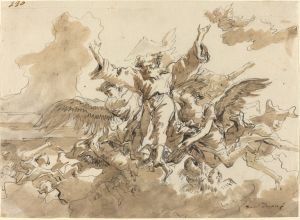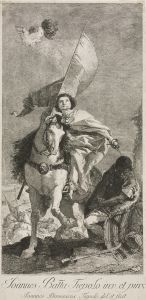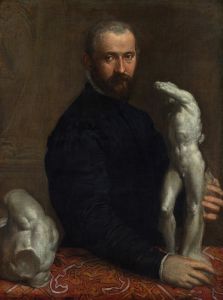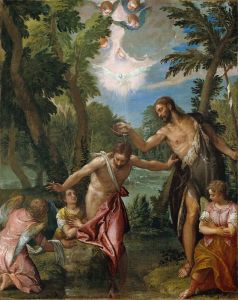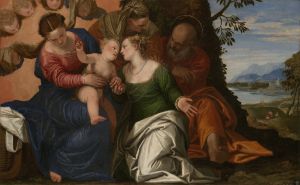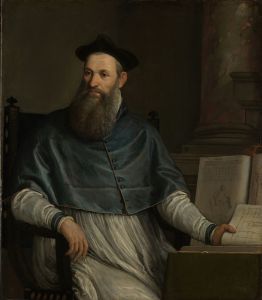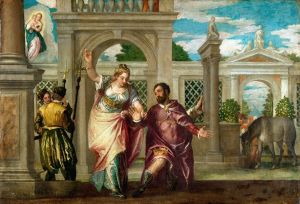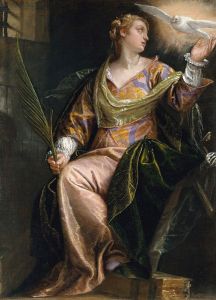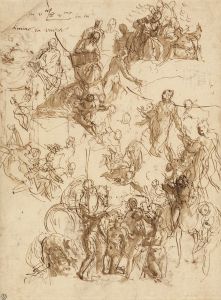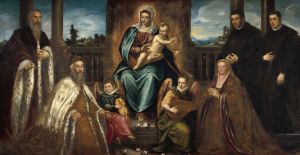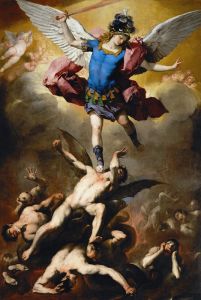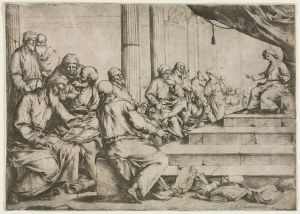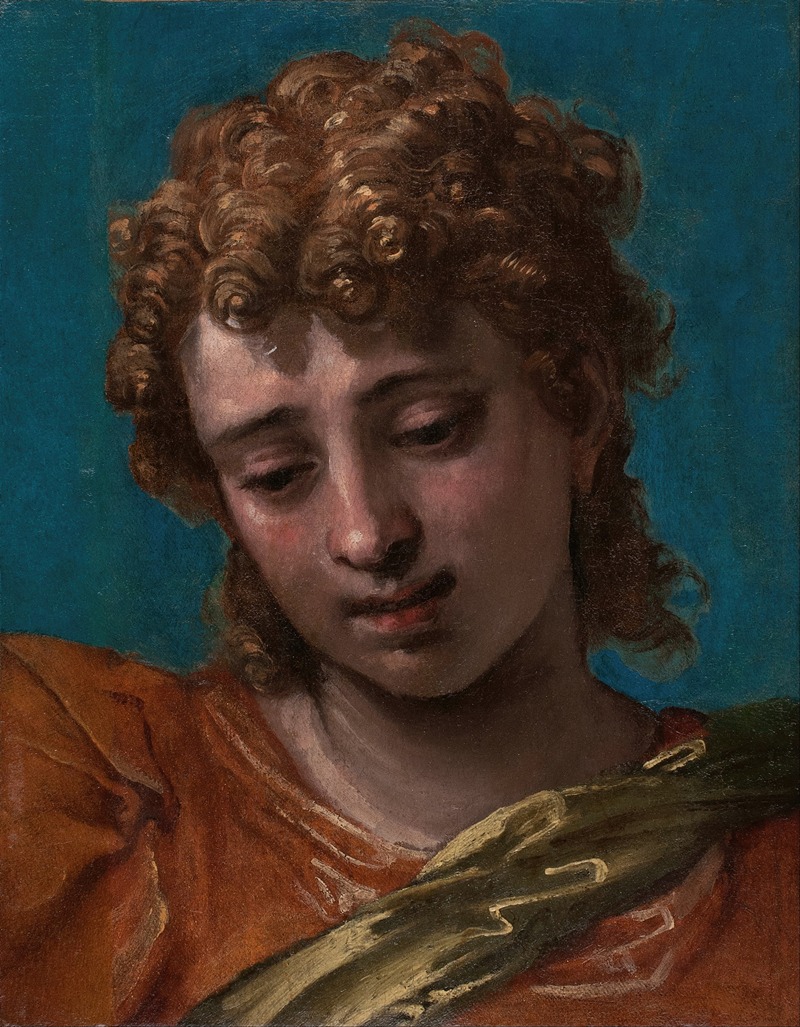
Head of Saint Michael, from the Petrobelli Altarpiece
A hand-painted replica of Paolo Veronese’s masterpiece Head of Saint Michael, from the Petrobelli Altarpiece, meticulously crafted by professional artists to capture the true essence of the original. Each piece is created with museum-quality canvas and rare mineral pigments, carefully painted by experienced artists with delicate brushstrokes and rich, layered colors to perfectly recreate the texture of the original artwork. Unlike machine-printed reproductions, this hand-painted version brings the painting to life, infused with the artist’s emotions and skill in every stroke. Whether for personal collection or home decoration, it instantly elevates the artistic atmosphere of any space.
The "Head of Saint Michael" is a fragment from the larger work known as the Petrobelli Altarpiece, created by the renowned Italian Renaissance painter Paolo Veronese. Veronese, whose full name was Paolo Caliari, was born in 1528 in Verona, Italy, and became one of the most prominent painters of the Venetian school. He is celebrated for his large-scale historical and religious paintings, characterized by their vivid color, intricate compositions, and dramatic use of perspective.
The Petrobelli Altarpiece was originally commissioned by the Petrobelli family for the church of San Francesco in Lendinara, a town in the Veneto region of Italy. The altarpiece was completed around 1563-1565 and was a significant example of Veronese's mature work. It depicted a sacra conversazione, a popular theme in Renaissance art, which typically features the Virgin Mary and Child surrounded by saints in a unified, harmonious composition.
Over time, the original altarpiece was dismantled, and its components were dispersed. The reasons for its disassembly are not entirely clear, but it was not uncommon for large altarpieces to be broken up, especially during periods of church renovation or changes in ownership. As a result, several fragments of the Petrobelli Altarpiece have survived and are now housed in different collections around the world.
The "Head of Saint Michael" is one such fragment. Saint Michael the Archangel is a prominent figure in Christian theology, often depicted as a warrior angel who leads the heavenly hosts against the forces of evil. In Veronese's depiction, Saint Michael is shown with a serene yet commanding expression, capturing the dual aspects of his role as both a divine messenger and a celestial warrior. The fragment highlights Veronese's skill in rendering human emotion and divine grace, even in a small portion of a larger work.
The fragment is characterized by Veronese's typical use of vibrant color and delicate brushwork. The attention to detail in the depiction of Saint Michael's features and the subtle play of light and shadow demonstrate Veronese's mastery of the Venetian painting style, which emphasized colorito, or the use of color, over disegno, or design.
Today, the "Head of Saint Michael" is part of the collection at the National Gallery in London. It remains an important piece for understanding Veronese's artistic legacy and the broader context of Renaissance art. The fragment not only provides insight into the original composition of the Petrobelli Altarpiece but also serves as a testament to the enduring appeal of Veronese's work. Through such fragments, art historians and enthusiasts can appreciate the technical prowess and creative vision that defined Veronese's contributions to the art world.
The story of the Petrobelli Altarpiece and its fragments, including the "Head of Saint Michael," underscores the complex history of art preservation and the ongoing efforts to piece together the past from surviving works. Each fragment offers a glimpse into the artistic and cultural milieu of Renaissance Italy, allowing contemporary audiences to connect with the rich heritage of this transformative period in art history.





